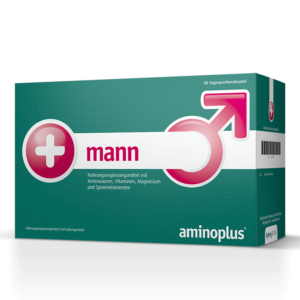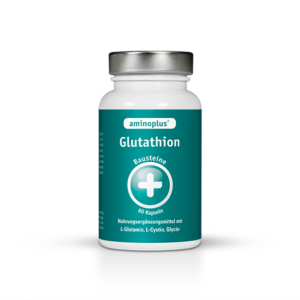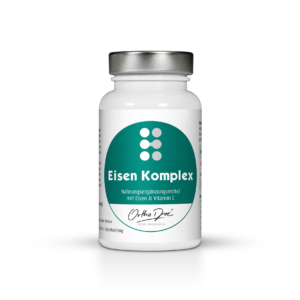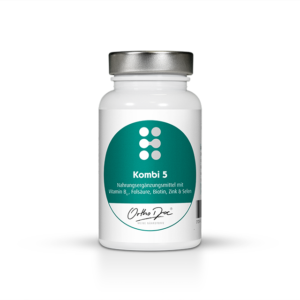NEWSLETTER
The transcription factor Nrf2
Antioxidants as natural protection against oxidative stress. Nrf2 activating substances for the activation of cellular defense are becoming increasingly important in medicine and therapy.
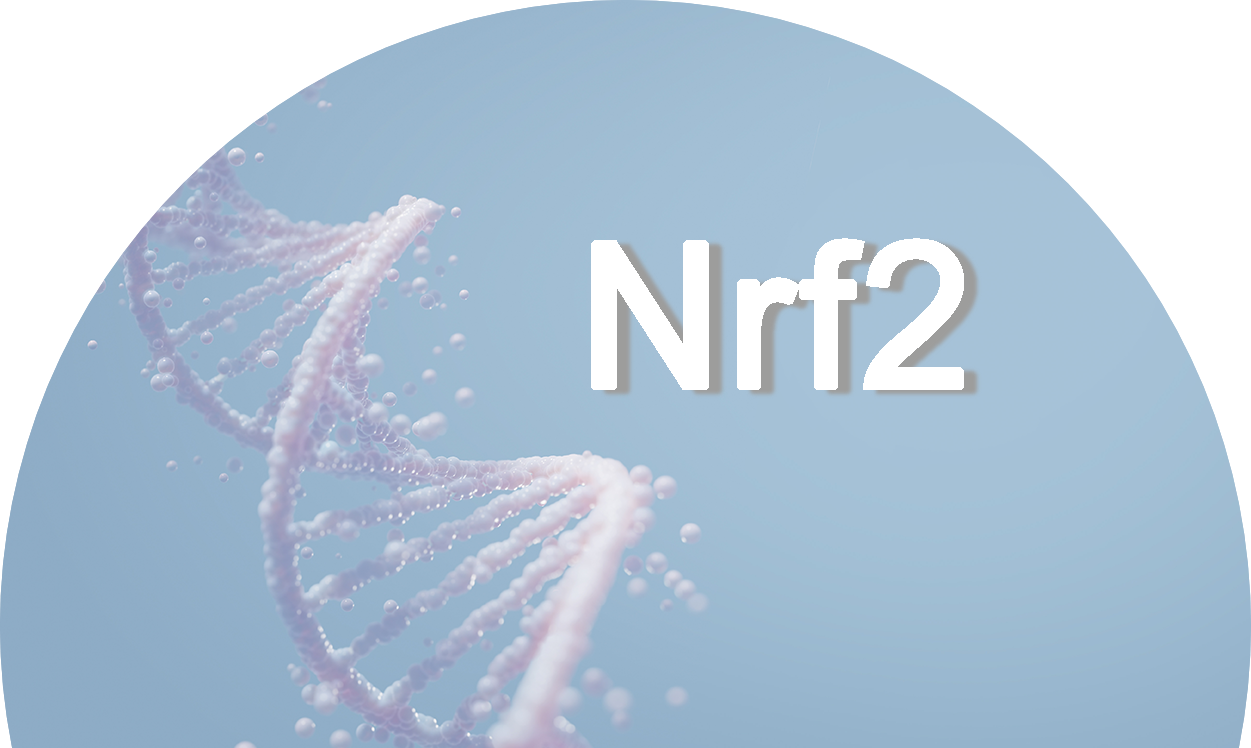
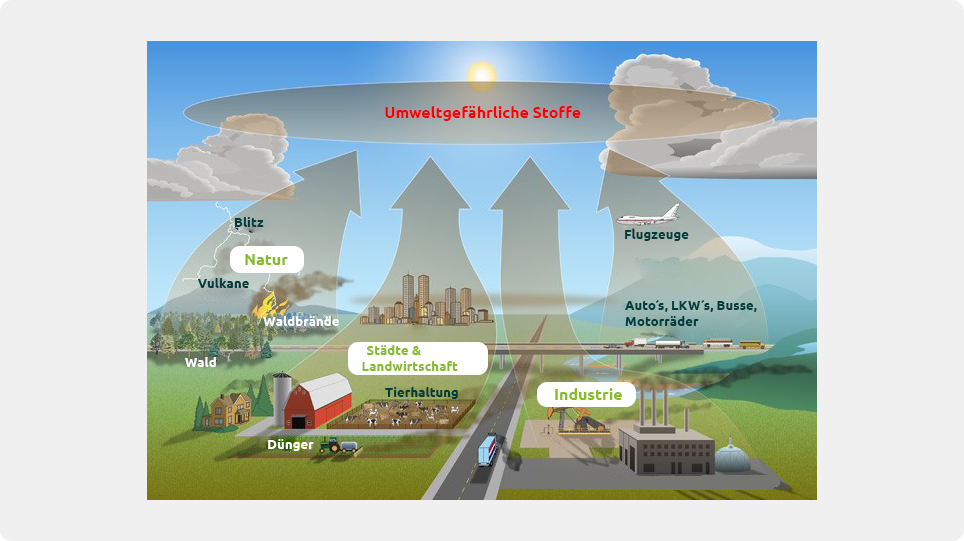
Nrf2 – The secret of natural power
What is NRF2?
Nrf2 is a transcription factor that is literally pronounced “nörf tu”. The abbreviation stands for Nuclear Factor Erythroid 2-related Factor 2.
Nrf2 is referred to as a master or key regulator in cell defense. Nrf2 is a transcriptional activator that encodes the expression of up to 500 genes. In addition to cytoprotective effects that go beyond those of an antioxidant, Nrf2 activates over two dozen genes that are involved in detoxification processes such as those of xenobiotics. In addition to these functions, the activation of Nrf2 influences the regulation and reduction of inflammatory reactions, improves mitochondrial function and stimulates autophagy.
According to Martin L Pall et al., studies from animal models and above human studies have shown that an increase in Nrf2 can be beneficial in the following diseases:
Cardiovascular disease (including, ischemic cardiovascular disease, vascular endothelial dysfunction, heart failure, Neurodegenerative diseases including Alzheimer’s, Parkinson’s, ALS, Huntington’s disease, cancer prevention, chronic kidney disease, metabolic diseases (type 2 diabetes, metabolic syndrome, obesity), several types of toxic liver diseases, chronic lung diseases (including emphysema, asthma and pulmonary fibrosis), sepsis, autoimmune diseases, inflammatory bowel disease, HIV/AIDS, multiple sclerosis and epilepsy.
Nrf2 – The secret of natural power
Examples of Nrf2
Silymarin
Milk thistle grows in southern Europe, among other places, prefers a sunny location and copes well with poor soils. The thistle belongs to the Asteraceae family and grows to a height of approx. 90-180 cm with purple flowers. Silymarin, a mixture of flavolignans, is extracted from the seeds and is considered a strong Nrf2 inducer. Milk thistle, Silybum marianum, has been used traditionally for many years, while its use in China has been documented for at least 2000 years. Milk thistle, or silymarin, has been described in scientific studies in recent years and the associated functions include properties such as reducing or preventing oxidative stress, scavenging free radicals, maintaining the integrity of the electron transport chain, enzyme enhancement of endogenous antioxidant systems or inducing non-enzymatic antioxidant systems. In one study, the therapeutic effect of a combination of silymarin and OPC from grape seeds on the histopathological changes of cardio-renal injury induced by doxorubicin (anthracycline) was investigated in a model experiment, as well as the possible role of Nrf2. The results showed a synergistic-therapeutic effect of the components in this experimental model, which is primarily due to the improved activation of the Keap1/Nrf2 signaling pathway.
PQQ
PQQ was first mentioned as a cofactor for bacterial dehydrogenases in the metabolism of bacteria at the end of the 1960s. After the final description of the chemical structure, PQQ was assigned to the family of quinone cofactors. The abbreviation PQQ for pyrroloquinoline quinone is also known as methoxatin. PQQ is involved in redox reactions and in mitochondrial metabolism. The body cannot produce PQQ itself and it is found in very small amounts in ng ranges in food. However, due to the low occurrence in food, it is difficult to obtain a meaningful intake of PQQ from these sources. 1 ng =109 g = 0.000 000 001 g
per 100 g natto = 0.0000061 g PQQ
Occurrence in food in ng/g
Natto 61
Parsley 34.2
Green tea 29.6
Green pepper 28.2
Oolong tea 27.7
Kiwi 27.4
Papaya 26.7
Sulforaphane
Sulforaphane is a secondary plant substance from the group of isothiocyanates, or mustard oils. The main occurrence of these mustard oils is in cruciferous vegetables, including cress, cabbage varieties such as cauliflower, white cabbage, Brussels sprouts and Chinese cabbage. They are also found, for example, in radishes, horseradish, radishes, rocket and turnips. Broccoli and broccoli sprouts are the most important and best-known representatives. The health-promoting effect of this mustard oil is complex and goes far beyond a simple antioxidant function, which is usually attributed to green vegetables. The amount of sulforaphane in a standard broccoli of approx. 500 g is classified as approx. 55 mg. However, there is also data that speaks of 30 mg in 750 g of broccoli. According to other studies, only approx. 9 mg of sulforaphane could be isolated from approx. 640 g of fresh broccoli florets, corresponding to approx. 14 ug/g of the fresh weight. These significant variations in sulforaphane content in the literature of broccoli and broccoli sprouts can be explained in many ways (pre-harvest factors, light, temperature, soil conditions/fertilization such as sulphur/nitrogen, irrigation, etc.), including the preparation to analysis method of the raw product. The cooking processes of fresh broccoli also influence the sulforaphane content depending on the cooking method. When prepared in the microwave and under low temperature conditions (40-60°C), broccoli has a higher sulforaphane content than when heated in water.
These natural fluctuations in content and preparation can be avoided by taking food supplements with a defined sulforaphane content.
The most important effect of sulforaphane in this context is the activation of phase II enzymes for the body’s own detoxification processes and, in the central focus, the activation of the transcription factor Nrf2 and the associated positive influences on relevant endogenous protective systems.
Nrf2 – The secret of natural power
Sources:
Epigenetics: Eating habits are reflected in the genome
Number of active ingredients in human and veterinary medicinal products
Nrf2 at the heart of oxidative stress and cardiac protection
Beverages Natural Nrf2 Activators from Juices, Wines, Coffee, and Cocoa
Factors Influencing Sulforaphane Content in Broccoli Sprouts and Subsequent Sulforaphane Extraction
Natura Foundation 2022 PQQ monograph
Agric Food Chem. 2020 Oct 21;68(42):11644-11664. doi: 10.1021/acs.jafc.0c04791. Epub 2020 Oct 12.
Nrf2 – The secret of natural power
Entering new dimensions
The world we live in is constantly changing. Since the beginning of industrialization in Europe 250 years ago, medical, technological and the associated impact on the environment has progressed far too quickly. We are being overtaken by environmental and climatic developments that we are barely able to stop. These include exposure to heavy metals, particulate matter, noise, radiation or contaminated water with pesticides or drug residues. Environmental factors play a major role in this negative development, as the risk of falling ill due to environmental influences has increased. The concept of epigenetics has emerged in this context. Epigenetics represents a link between environmental factors and their influence on genetics. This influence of epigenetic mechanisms, which are primarily triggered by environmental factors, is increasingly being discussed.
From an orthomolecular perspective, nutrients that support the body’s own detoxification processes, strengthen the intestinal barrier and build up the immune defense should be added to counter the numerous noxious substances with which we are confronted and which can trigger inflammatory processes and weaken the Immune System. In addition to the classic nutrients, more and more phytochemicals are finding their way into the accompanying therapy, which have an influence on the intracellular transcription level and can thus serve as motors for transcription processes.
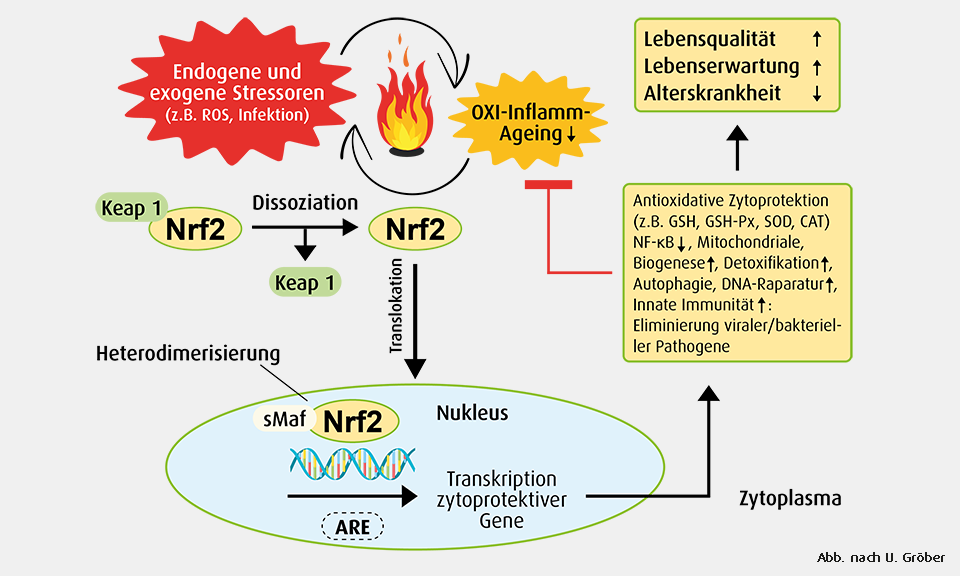
Nrf2 – The secret of natural power
Function of Nrf2
The function of Nrf2 can be described in reduced form as follows. Nrf2 is present in the cytoplasm in an inactivated form and is proteosomally degraded there. However, if it is activated by oxidative stress, Nrf2 enters the nucleus and forms so-called Maf, which enables it to bind to the antioxidant response element (ARE). About Us, the transcription of the genes controlled by the ARE is further modulated.
ARE is one of the so-called cis-elements that are inactivated under normal conditions by binding the inhibitor Kelch-like-ECH-associated protein 1 (Keap1). Oxidative stress, e.g. in the form of ROS, RNS or H2O2, changes the free SH groups in the cysteine part of Keap1. This results in a change in conformation, whereby Keap1 detaches from Nrf2. Nrf2 enters the nucleus and begins transcription of the target genes in the promoter region, which Nrf2 enhances as a transcription enhancer.
(see illustration after U. Gröber)
Known Nrf2-dependent target genes.
These include, for example, the enzymes of phase II reactions for the degradation of organic toxins and the Detoxification of heavy metals. Phase II enzymes include glutathione S-transferase (GST), N-acetyltransferase 2, NAD(P)H: quinone oxidoreductase 1 (NQO1), UDP-glucuronyltransferase, superoxide dismutase (SOD) and catalase, among others, which are influenced by Nrf2. Nrf2 also regulates genes that influence cell differentiation, inflammatory processes and cell apoptosis.
Nrf2 – The secret of natural power
The colorful palette of Nrf2 activators
In addition to broccoli, silymarin or pyrroloquinoline quinone, there are other plant treasures that together act as activators of Nrf2. These plants, or the naturally occurring compounds obtained from them with high antioxidant activity through the activation of Nrf2, include spice plants such as cinnamon, rosemary, turmeric, thyme, ginger and pepper. Pleasure plants as natural Nrf2 stimulators include red onions, the already known cabbage vegetables, eggplant, coffee, tea, grapes, pomegranate and mango. They are considered potential activators that activate the Nrf2 siganal pathway.
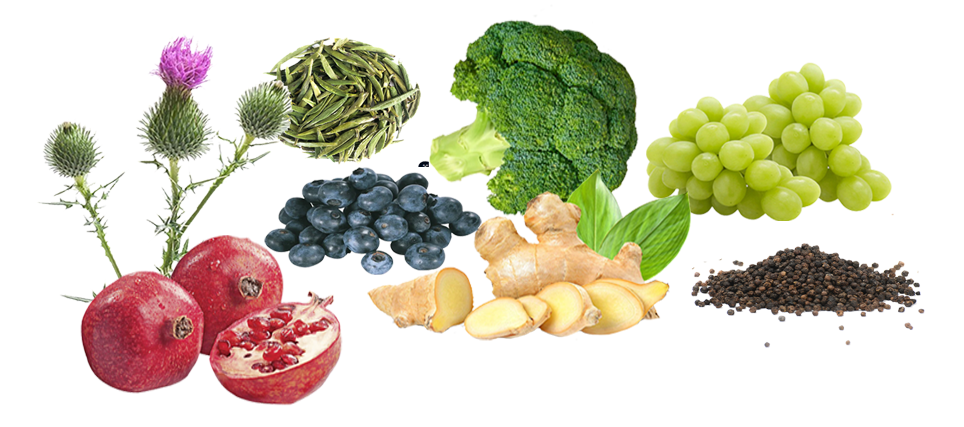
Nrf2 – The secret of natural power
Nrf2 – The transcription factor
Since its first description in 1994, Nrf2 has been the subject of intensive research, with its beginnings in cancer research. However, the spectrum of properties of Nrf2 goes further. If you perform a simple Pubmed search with just the keyword “Nrf2”, 23,570 publications appear (retrieved 04.10.2022). The headings for these studies include, for example
Nrf2 as a regulator of cell metabolism and inflammation in cancer
Nrf2, a Transcription Factor for Stress Response and Beyond
Nrf2 at the heart of oxidative stress and cardiac protection
Nrf2 in Cardiovascular Diseases: a Ray of Hope!
Oxidative Stress and Cancer: The Role of Nrf2.
Regulation of Nrf2 by Mitochondrial Reactive Oxygen Species in Physiology and Pathology
Role of Nrf2 and Its Activators in Respiratory Diseases
The Roles of Nrf2 in Modulating Cellular Iron Homeostasis
The Keap1-Nrf2 System as a Molecular Target of Cancer Treatment

